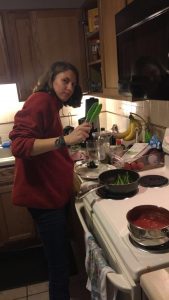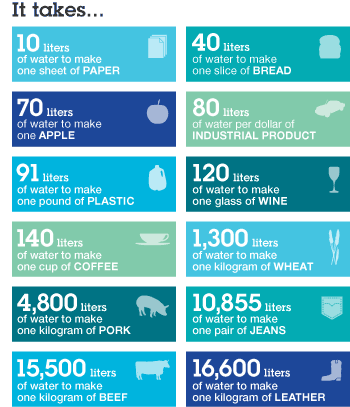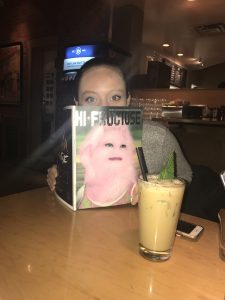So far I have done item numbers 1, 3, and 6. First, I became a vegan. It has been slightly difficult to adjust to a vegan lifestyle at college, but I have made it work. I have slipped up a few times as I have not realized that products I use daily aren’t vegan, but I have overall enjoyed my experience and plan on remaining vegan after the month of action is over. I have also calculated my water footprint to see what areas I am strong in and weak in with my water usage. I calculated this information via this website and my results are attached below.

My average was nearly half the US’s average, and I owe this to my newly adopted vegan diet and lifestyle. I have been trying to cut back my water usage overall, and my number was so low because of this. The leading factors to my number being the amount it is was my diet, which used half the amount of water a meat eater used. I also haven’t bought any new items this semester, and have instead thrifted for new clothing. Had I only bought new items and fast fashion, my number would have been much higher. I also calculated my number as if I was the only one in my household. I would be interested to see what the number my suite would be if we all took the quiz. There is only one other vegan in the suite and a few people who occasionally eat vegetarian. I believe that our number would collectively be quite high.
For my last item I cooked a vegan meal for a someone who is vegetarian most of the time, Mallory, and someone who eats meat all the time, her sister Ellen. I decided to make a meal any meatlover would enjoy, vegan meatball subs and asparagus. The meal did not cost a lot of money, however I forgot to take note of the prices of items and didn’t ask for a receipt to save paper. I also made sure the items I bought came from the US as to not waste lots of water during production. I would have rather gotten food from a farmers market, however with the weather being the way it was and my budget, that was not an option. We had a lot of left overs afterward, enough to make an entire new batch of subs. I educated them on why I became vegan, and how much water eating meat wasted. While Ellen was not “converted” to be a vegetarian or vegan, she said that she would definitely be open to eating vegan meals more often! 


I have learned a lot about myself, others, and how to navigate college now as a vegan. I cannot eat out at many places anymore, which is both a curse to my stomach but a blessing to my wallet. For me, not eating meat is simple because I haven’t eaten it in nearly a decade. It was easier for me to become vegan during this year because I am not used to eating meat at every meal like most Americans. It was good to see that I was saving even more water than before with my diet. I also learned how to cook a really delicious and easy vegan meal and share it with others. I enjoyed talking to people of two different eating styles about my project regarding veganism and water use. They were very susceptible to this new information and planned on changing their water intake and eating more vegan meals.


















































